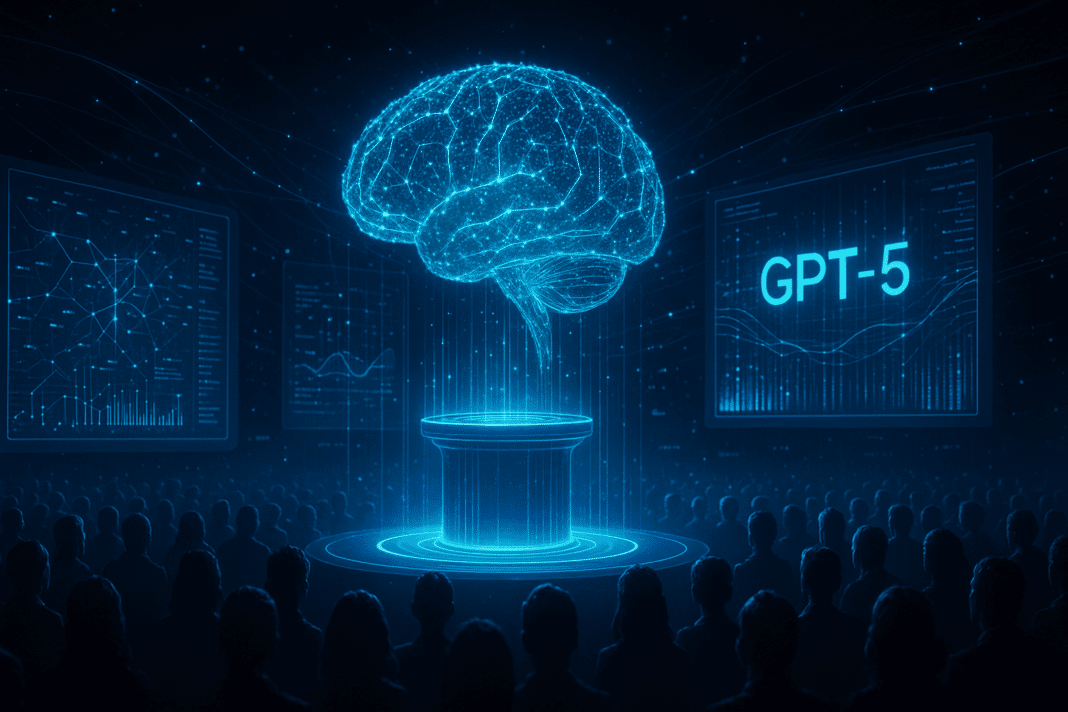OpenAI’s GPT-5 Launches a New Era of AI Assistants
In August 2025, OpenAI unveiled GPT-5, the latest version of its flagship generative AI model. The launch was highly anticipated after ChatGPT had already become a worldwide sensation. According to OpenAI, ChatGPT now serves over 700 million users each week – nearly 10% of the global population. This massive user base underscores ChatGPT’s ubiquity: it’s one of the most widely used consumer applications ever. OpenAI’s CEO Sam Altman hailed GPT-5 as “the best model in the world,” calling it a “significant step” toward advanced AI.
One major highlight of GPT-5’s release is accessibility. OpenAI made GPT-5 the default model for all free ChatGPT users. Previously, access to cutting-edge AI was restricted to paid subscribers. Now, anyone can try GPT-5’s enhanced reasoning and creative abilities at no cost. This democratization aligns with OpenAI’s mission to broadly share AI’s benefits. As Nick Turley, OpenAI’s VP of ChatGPT, noted: releasing GPT-5 widely fulfills the goal of giving more people the advantage of powerful AI.
What can GPT-5 do? OpenAI claims GPT-5 excels in several domains. It “edges out” other leading models on many performance benchmarks, especially in coding and scientific reasoning. For example, GPT-5 scored 74.9% on a GitHub-derived coding test (“vibe coding”), slightly above competitors. On a difficult multidisciplinary exam, GPT-5 with extra reasoning tools achieved near top scores. In health-related queries, GPT-5 drastically reduced factual errors (just 1.6% “hallucination” rate) compared to 13–16% in earlier models. The model also shows improvements in creative tasks – OpenAI says GPT-5 has “better taste” and more natural responses in design and storytelling.
Safety and accuracy were emphasized. OpenAI reports GPT-5 is “safer” and less prone to misinformation than previous versions. In blind tests, GPT-5 hallucinated (made up facts) only 4.8% of the time, down from over 20% in GPT-4’s upgrade. The model more reliably flags harmful or unsafe prompts, refusing disallowed queries more effectively. This reflects OpenAI’s focus on reducing malicious or misleading outputs even as AI grows more powerful.
GPT-5 is also a leap forward for developers and organizations. OpenAI will offer GPT-5 through its API in three sizes (full, mini, nano) to manage speed vs. power. Developers can now adjust “response length” in API calls, giving finer control over output verbosity. On the consumer side, ChatGPT added new personality settings (e.g. “Nerd”, “Listener”) that let users tweak GPT-5’s style without special prompts. High-tier subscribers (GPT Plus/Pro) get higher limits and access to GPT-5 Pro, an even more capable variant using extra compute.
In sum, GPT-5’s arrival marks a major milestone in AI. It brings frontier-level AI technology into the mainstream. Analysts note that GPT-5’s availability to millions will influence not just tech innovation, but broader society – from education to healthcare. As one commentator observed, the launch is a bellwether for how quickly AI is integrating into everyday tools. Businesses, educators and developers are now exploring how to leverage GPT-5’s new powers. From automating workflows to creative content generation, GPT-5 opens many possibilities.
Conclusion
The release of GPT-5 is more than just a product update—it signals a turning point in the relationship between humans and artificial intelligence. By giving free users access to its most advanced model, OpenAI has broadened AI’s reach to unprecedented levels. This moment will likely accelerate how quickly businesses, schools, and everyday people embed AI into their routines. The fact that GPT-5 combines better reasoning, stronger safety, and creative flexibility makes it not only a tool of convenience but also a driver of societal change. Its influence will continue to grow as new industries and global communities adopt its capabilities.
Further Reading
- OpenAI Blog – GPT-5 Announcement
- TechCrunch – GPT-5 Launch Coverage
- MIT Technology Review – The Next Wave of AI
- Stanford AI Index Report
